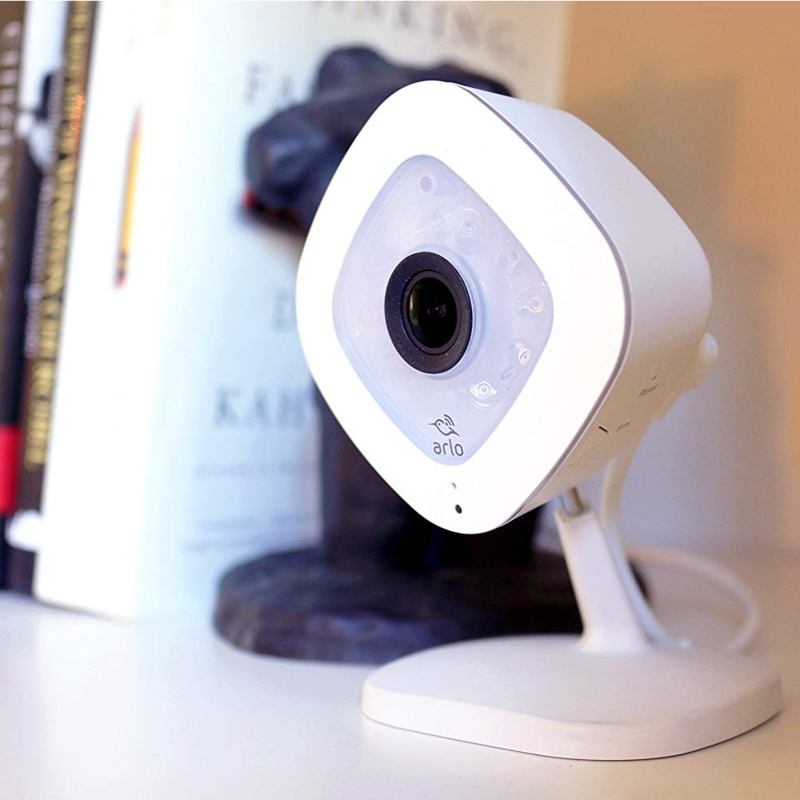Should I get a wire-free or powered Arlo security camera?

Best answer: Yes, you should probably spring for a wire-free camera. Unless you know you're never going to want a security camera outside, you should probably invest in Arlo's weatherproof indoor/outdoor wire-free cameras.
Amazon: Arlo Pro 2 ($380)
What does "wire-free" on an Arlo camera mean?

Arlo classifies its cameras into two broad categories: powered and wire-free. Powered cameras are security cameras that are traditionally powered by a standard cable, while wire-free cameras are not tethered to a power outlet or an Ethernet cable and are powered by a battery and connected via Wi-Fi.
Which Arlo cameras are wire-free?
Arlo's wire-free cameras include the Arlo Pro, Arlo Pro 2, and original Arlo (often called the Arlo Wire-Free) — which all rely on a Wi-Fi connection to Arlo base stations that sit safely inside your house — and the Arlo Go — which uses LTE instead. These cameras don't rely on AC adapters for power, but rather replaceable batteries that can power the camera for a few months.
That said, you can use a power cable for your wire-free cameras, but since that requires leaving the camera's port flap open, Arlo only recommends using the available power adapter indoors.
Be an expert in 5 minutes
Get the latest news from Android Central, your trusted companion in the world of Android
Arlo Baby is officially classified as a wire-free camera, but it actually straddles the line between the two, as it features an internal battery for a few hours of monitoring away from its charger, but it spends most of its time plugged in. As such, the Arlo Baby does not have the same waterproof ratings and is not meant to be used outside.

Weatherproof and futureproof: The benefits of Arlo's wire-free cameras
Powered cameras can potentially be a little bit cheaper up front than base station-reliant, wire-free models, but wire-free cameras can be used in far more mounting locations. Wire-free cameras are also easier — and often more affordable — to add to an existing Arlo camera system than powered cameras.
Want to place a camera in an area without any nearby outlet, such as the ceiling of a room or the high corners of your front porch? Wire-free cameras mean you don't have to worry about running a cable — or even worse, putting down a down dozens of cable clips, to keep it in place.
The Arlo Pro 2, Arlo Pro, Arlo, and Arlo Go cameras are also IP65 water-resistant, so you can mount them outside without having to worry about a storm soaking or shorting them out. These cameras are slightly more tolerant of hotter climates than the snowy north with a recommended temperature range of 32° to 122° F. Users have reported cameras functioning without issue down to 20° F before they start seeing Arlo's built-in temp-triggered shutdowns, but you may want to consider bringing them inside if there's a nor'easter coming.
Three times when powered Arlo cameras make sense
Now, while wire-free is preferable, there can be certain instances when a powered indoor camera is more practical or functional than wire-free models, and if any of these situations apply to you, then you should seriously consider a powered camera over the wire-free models.

- If you are not around often to change the batteries: While the batteries in Arlo's wire-free cameras can last 3-6 months, if the battery goes dead and you're not around to replace it, you'll be blind until you can get it replaced. Being around to swap batteries every couple of months might not seem like a huge requirement, if you're intending to use Arlo cameras to monitor a distant location like a lesser-used business property, summer home/condo, or the home of an aging loved one, a powered camera might provide more peace of mind.
- If you need a wired internet connection: Arlo wire-free cameras rely on a connection to a proprietary base station with a range of 300 feet — with the exception of the mobile-data-driven Arlo Go — and if your home has especially thick walls or walls of dense material like stone or concrete, then your camera might not be able to receive a signal from the base station as needed. If this is the case in your building, you'll need to use the Arlo Q Plus, which can use ethernet for data — and power, thanks to PoE (Power over Ethernet), so you'll only need to run cable.
- You need 24/7 recording: Arlo's wire-free cameras don't start recording until something triggers its motion sensors, which like any sensor can miss some events or be tricked any number of ways. If you need the camera recording 24/7 — such as at a small business or a dorm room in a sketchy residence hall — you'll want to go with a powered camera that can keep up with the power drain constant recording entails.
Again, powered cameras are indoor-only and have a range that is limited by their wires, but using PoE, the Arlo Q Plus can be immensely flexible in its mounting because CAT5 Ethernet cords can be bought in every length imaginable.

These wire-free cameras can be used just about anywhere you can screw in the mounting bracket.
Arlo's Pro 2 cameras are 1080p so you can make out details and faces more easily, the Arlo Pro 2 base station allows you to store up to 7 days of recordings for free both in the cloud and locally thanks to the USB backup option.
Ara Wagoner was a staff writer at Android Central. She themes phones and pokes YouTube Music with a stick. When she's not writing about cases, Chromebooks, or customization, she's wandering around Walt Disney World. If you see her without headphones, RUN. You can follow her on Twitter at @arawagco.

